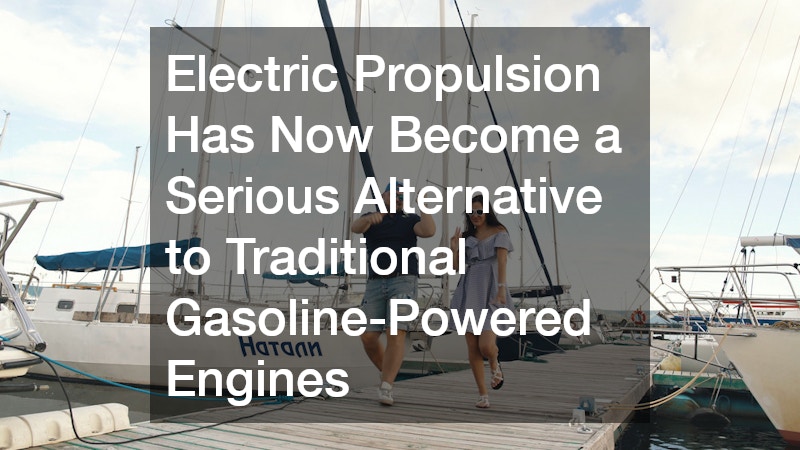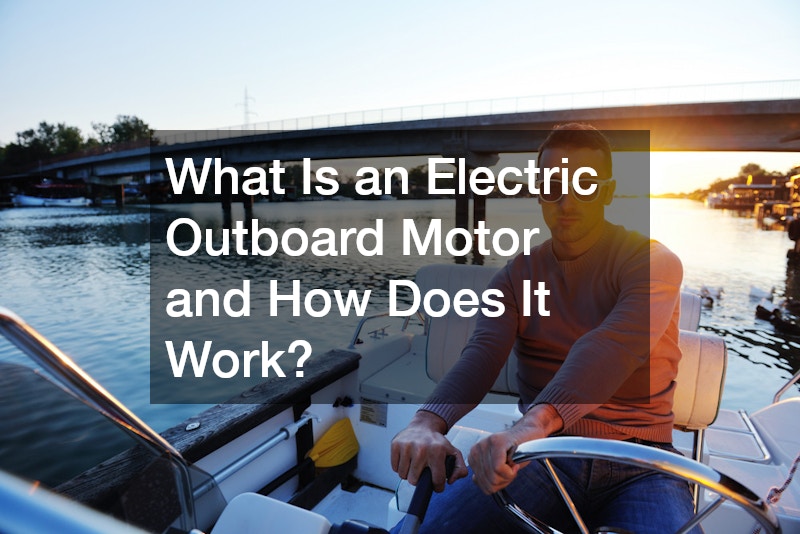The boating world is evolving rapidly, and one of the most exciting advancements in recent years is the rise of electric outboard motors. Once considered niche or experimental, electric propulsion has now become a serious alternative to traditional gasoline-powered engines.
Electric outboard motors combine sustainability, simplicity, and smooth performance, making them an increasingly popular choice for eco-conscious boaters and hobbyists alike. Whether you enjoy fishing, sailing, or exploring quiet lakes, these motors offer a cleaner, quieter, and more efficient way to navigate the water.
In this article, we’ll break down what electric outboard motors are, how they work, and why they’re gaining traction across the boating community.
How Does an Electric Outboard Motor Function?
At a basic level, an electric outboard motor uses stored electrical energy to turn a propeller and move a boat through the water. Unlike traditional outboards that rely on internal combustion, electric models convert energy from batteries into mechanical motion through an electric motor.
Core Components and Mechanism
An electric outboard motor consists of three main parts: the battery, the motor, and the propeller—along with a few key supporting systems.
-
The Battery
The battery is the energy source that powers the motor. Most modern electric outboards use lithium-ion batteries due to their lightweight design, high energy density, and long lifespan. When you throttle up, the battery releases electrical current to the motor through a control unit. -
The Motor
The motor converts electrical energy into mechanical energy. Inside, magnets and coils generate rotational force, which spins the shaft connected to the propeller. One major advantage of electric motors is instant torque—they deliver power smoothly and immediately, providing excellent acceleration without gears or lag. -
The Propeller and Control System
The propeller transforms the motor’s rotational energy into thrust, pushing the boat forward or backward. The control system (or controller) regulates how much power is sent to the motor, allowing precise speed adjustments. Many systems also include digital interfaces or smartphone apps that monitor battery levels, temperature, and range.
Together, these components form a simple yet highly efficient propulsion system. With fewer moving parts than gasoline engines, electric outboards are easier to maintain and less prone to mechanical failure.
What Are the Benefits of Using Electric Outboard Motors?
Electric outboard motors offer a range of advantages that appeal to boaters, from environmental benefits to cost savings and improved user experience.
Eco-Friendly Nature
One of the biggest advantages of electric outboards is their zero-emission operation. Unlike gasoline engines, they produce no exhaust fumes, oil leaks, or greenhouse gases. This makes them ideal for sensitive environments such as lakes, rivers, and coastal areas where water quality and wildlife preservation are priorities.
Because electric motors operate silently, they also reduce noise pollution, allowing boaters to enjoy a peaceful ride without disturbing marine life or other people on the water. For anglers, the quietness is especially valuable—fish are less likely to be scared away by engine noise.
Cost-Effectiveness
While electric outboards can have a higher upfront cost, they often deliver long-term savings. Electricity is cheaper than gasoline, and the efficiency of electric motors means you get more propulsion from less energy.
Maintenance expenses are also significantly lower. There are no spark plugs, carburetors, or oil changes to worry about—just periodic checks on the battery and electrical connections. Over time, these reduced maintenance costs can easily offset the initial investment.
Additionally, many regions offer rebates or tax incentives for electric marine propulsion systems, further improving affordability.
Quieter Operation and Enhanced Comfort
Electric motors provide a smooth, vibration-free ride. Without the rumble of combustion or the smell of fuel, boaters can enjoy conversations, music, or the sounds of nature without distraction. The instant torque also makes maneuvering easier, especially in tight docks or shallow waters.
This enhanced comfort and control are key reasons why electric outboards are becoming a preferred choice for leisure and family boating.
What Should You Consider When Choosing an Electric Outboard Motor?
Selecting the right electric outboard motor depends on several important factors. Understanding your boat’s needs and how you plan to use it will help ensure you get the best performance and value.
Power Requirements and Battery Life
Electric motors are rated in kilowatts (kW) or pounds of thrust, rather than horsepower (HP). As a rough comparison, 1 kW equals about 1.34 HP. Smaller boats may need only 1–3 kW motors, while larger or heavier boats might require 10–20 kW or more.
Battery life is another crucial factor. The range of your boat depends on battery capacity (measured in kilowatt-hours, or kWh), cruising speed, and load weight. Some systems allow for modular battery setups, letting you add more capacity for longer trips.
Compatibility and Size
Before purchasing, make sure the electric outboard motor is compatible with your boat’s transom height, weight limit, and hull type. Lightweight boats benefit most from electric propulsion, as they require less power to achieve optimal performance.
Some electric outboards are designed as direct replacements for gas models, using standard mounting systems and controls. For others, especially high-power models, you may need professional installation to ensure proper wiring and balance.
Maintenance Needs
Electric outboard motors require minimal maintenance compared to traditional engines, but they still benefit from regular care. Keep electrical contacts clean and dry, check the propeller for debris, and store the battery properly during off-season months.
Proper battery management—charging it fully before use, avoiding deep discharges, and storing it at moderate temperatures—can significantly extend its lifespan.
Electric outboard motors represent a major step forward in sustainable boating. By replacing noisy, polluting engines with clean and efficient electric systems, boaters can enjoy the water with less impact on the environment—and often with less hassle and expense.
Understanding how electric outboard motors work, their key benefits, and the factors to consider when buying one will help you make an informed decision that matches your boating lifestyle.
Whether you’re exploring tranquil lakes, fishing in silence, or simply seeking a modern, maintenance-free alternative to gas propulsion, electric outboard motors offer a smart and responsible way to power your next adventure.

